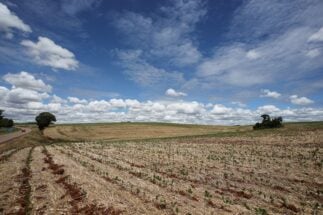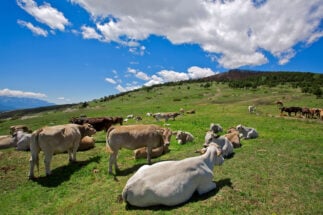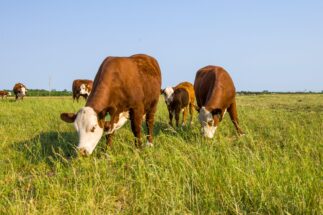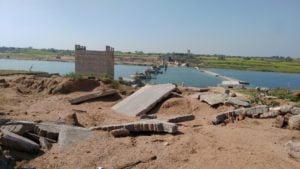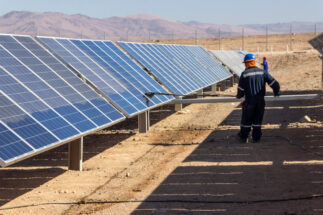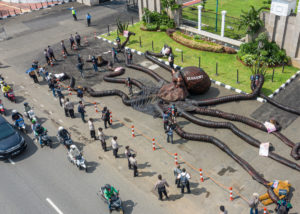Located in the northern Chaco region, the Submeridional Lowlands are one of the largest wetland areas in Argentina. Though of little fame outside and even within Argentina, they are now the subject of an initiative to reclaim productive land, one that is generating enthusiasm among the authorities but drawing criticism for its potential environmental risks.
5.5 million hectares
The area of the bajos submeridionales, the Submeridional Lowlands, which stretch across three provinces in northern Argentina and have been identified by various authorities as a region of ecological importance
With a surface area of 5.5 million hectares, the lowlands comprise a hydrological system crossing the provinces of Santa Fe, Chaco and Santiago del Estero, characterised by cycles of floods and droughts over short periods of time. These have long been a challenge and a focus of attention for the provincial governments, who have attempted to take action to control these events.
In these lowlands, rural villages coexist with relatively dispersed agricultural and livestock activity – the main production focus being extensive cattle breeding. The vast plain is also home to more than 200 species of birds, several of them endangered, such as the yellow cardinal. Its wetlands have been identified by The Nature Conservancy as one of the continent’s “most important and sensitive” regions, and are considered an Important Bird Area by BirdLife International.
In a historic move, the national government and the three provinces recently outlined an ambitious joint project aimed at converting and reclaiming between 800,000 and 1.2 million hectares of the lowlands’ area for production. According to a presentation made to the Director-General of the UN’s Food and Agriculture Organization, Qu Dongyu, the region has potential in cotton, sunflower, maize, soya, sorghum and wheat, as well as in dairy, sheep, goat and farm livestock production, firewood extraction and honey production.

Ariel Martínez, undersecretary for policy coordination at Argentina’s Ministry of Agriculture, Livestock and Fisheries, told Diálogo Chino that the project aims to provide “some predictability” in the face of frequent floods and droughts. He claimed that the increase in production will be “under certain friendly characteristics that do not change the use of the land in the area.”
To date, there is no further clarity on what type of work will be carried out, but the spread of news around the initiative has generated a reaction from environmental sectors. “If the aim is to expand the agricultural frontier, this large area of natural landscapes will potentially be replaced by agricultural crops, which means a direct loss of biodiversity,” said Andrés Pautasso, a researcher at the Florentino Ameghino Provincial Museum of Natural Sciences in Santa Fe.
For Pautasso, who describes the wetlands’ situation as reminiscent of the Pampa region “before agriculture ate everything”, the central discussion is “what type of production do we want?”. According to Pautasso, the debate is between those who think that production should be adapted towards natural rhythms, and those who think that ecosystems should be adapted to the rhythms of production.
In private hands
The future of the wetlands is being decided within the Interjurisdictional Committee of the Submeridional Lowlands Water Region (CIRBHAS), a body created during the previous national government and ratified by the current one. The masterplan for the works, currently being drawn up by a group of consultants contracted by the Federal Investment Council (CFI), will be evaluated by CIRBHAS.
According to the terms of the public tender for the project, prior to any intervention, a strategic environmental assessment must be carried out, as well as the implementation of a “hydro-environmental monitoring network” and a round of consultations with key stakeholders in the region, such as agricultural producers and environmental organisations.
This is the first time that the situation has been approached from a holistic point of view
In addition to these provisions, environmental organisations have raised concerns in light of similar works already seen in the region. According to a 2017 investigation, the canal and embankment projects already carried out to deal with floods and droughts “modified the natural dynamics and characteristics of the wetlands, promoting the extension of some and the degradation and loss of others”.
The authorities argue that, this time, the story will be different. “This is the first time that the situation has been approached from a holistic point of view,” said Santa Fe’s Minister of Production, Daniel Costamagna, who added that the project considers “not only works, but also management, because the productive characteristics of the area mean that we are dealing with a very vulnerable system.”
For the official, “what is good for the environment is good for production”. In this sense, he emphasised that one of the main challenges of planning is to find ways to increase the efficiency of cattle production while meeting high environmental standards.
Counter arguments
The underlying debate around the Submeridional Lowlands is a familiar one, seen in other situations in which drives to increase productive capacity imply a challenge to the environment – such as in investments in the pork production sector or offshore oil exploration. One side seeks to promote the economic benefits, while the other exposes the environmental consequences.
Mario Basan Nickisch is a water resources engineer at the National Institute of Agricultural Technology (INTA). For him, what is being sought is to produce “under good sustainable practices”.

“Since I have been in this field, discussions of wetlands have never been on the agenda. The topic was taboo,” Nickisch said. The specialist sought to reassure organisations that warn about the risks of the interventions, stating that CIRBHAS is made up of an interdisciplinary team and that “no project goes ahead without an environmental impact study”.
For environmentalists, significant damage to the wetlands has already been done. A communiqué issued at the end of March by various environmental entities stated that works already carried out have “caused extraordinary droughts”, and that future intervention without due evaluation “will result in serious damage to a fragile ecosystem”. This condition, they argued, has been aggravated “due to changes in land use, deforestation and clandestine drainage in the region for decades”.
This situation is taking place while the Argentine congress continues to postpone the debate on a wetlands law, an initiative that, although receiving support from the government, has not yet materialised. There is no bill proposed on the subject, but the sources consulted agree that the enactment of a law would help to contain possible adverse effects of any interventions in the Submeridional Lowlands.

